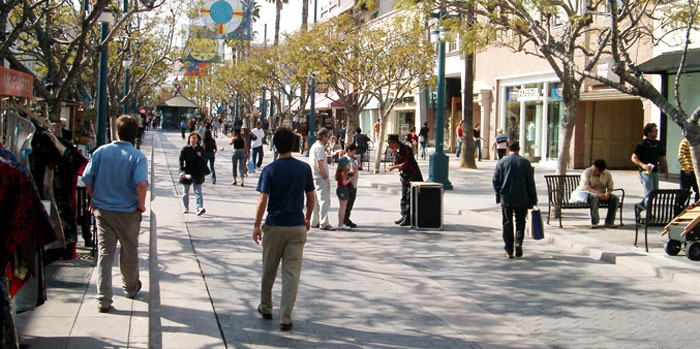American Lung Association: smart growth saves lives, improves health
 |
| Photo courtesy of Compass Blueprint |
There are many reasons smarter growth makes sense. By building more sustainably and closer to where people work and shop and plan, we reduce hours stuck in traffic and make it easier to reach life’s necessities.
But there is something even more important at stake: our health. According to new data from the American Lung Association in California, smart growth policies can prevent 140 premature deaths and 105,500 asthma attacks every year in that state. The figures resulted from looking at a proposed 2035 planning scenario for California that prioritized more compact and sustainable development with better transportation options.
Changing how we build and plan would also relieve our communities of $1.66 billion in public health costs. It would also prevent:
• 260 heart attacks
• 215 acute bronchitis incidents
• 95 cases of chronic bronchitis
• 2,370 asthma attacks
• 101,960 other respiratory symptoms
• 205 respiratory ER trips and hospitalizations
• 16,550 lost work days
• 132,190 tons of criteria pollutants
Chelsea Allinger discussed the link between smart growth and active living over at Smart Growth America:
Like many Americans, I grew up knowing only one type of community design — drivable suburbia. In my community, exercise wasn’t something that happened naturally over the course of the day. It required carving out designated time slots from a crowded schedule.
Frankly, that didn’t happen as often as it should.
Since that time, I’ve learned that cultivating a more active lifestyle doesn’t have to mean finding a 25th hour in the day. Moving to a walkable, mixed-use, smart growth community quite literally changed my life — with, as it turns out, more significant health benefits than I’d initially realized.
Here is Dr. Sonal Patel in Capitol Weekly, discussing why many of her colleagues in health care also see the connection:
Most California cities were designed to make it easy to drive and park cars. Homes were separated from stores, workplaces and other commercial activities. The unwitting result was sprawling cities that maximize the amount of miles we drive and the time we sit idling in traffic and that minimize healthier options like walking, biking or public transit.
In the past decade, California has been on the cutting-edge of efforts to build more sustainably and closer to transit. In 2008, Governor Arnold Schwarzenegger signed SB 375, which required local communities to include greenhouse gas reduction targets in their land-use and transportation planning policies.



















